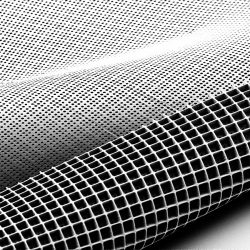Devices That Bend with the Body
Flexible bioelectronics will revolutionize human health.

In the future, a flexible bioelectronic artificial retina implanted in a person’s eyeball could help restore vision. Vecteezy
Today, foldable phones are nothing new. But now, using models that predict how well a flexible electronic device will conform to spherical surfaces, UW–Madison and University of Texas–Austin engineers could usher in a new era in which these bendy devices integrate seamlessly with parts of the human body.
In the future, for example, a flexible bioelectronic artificial retina implanted in a person’s eyeball could help restore vision, or a smart contact lens could continuously sense glucose levels in the body.
“With our powerful simulation model, we can now predict the conformability immediately, which dramatically speeds up the design process for flexible electronics,” says Ying Li, a UW associate professor of mechanical engineering whose research group developed the computational models.
To perform as expected, bioelectronic devices must make very close contact with living tissue and avoid buckling or creasing. However, researchers have struggled to get flexible electronics to fully conform to surfaces such as spheres — and these surfaces are all over the human body.
The research team systematically investigated how circular polymer sheets and partially cut circular sheets conform on spherical surfaces. Analyzing those results enabled them to derive a ready-to-use formula that reveals the underlying physics and predicts the conformability of flexible electronics.
The researchers also demonstrated a simple and elegant method for greatly enhancing the ability of flexible sheets to conform on spherical surfaces. Inspired by the Japanese art of kirigami, in which paper is cut and folded, they made the simplest possible radial cuts in the circular sheet, improving its conformability from 40 percent to more than 90 percent.
“This is the first work to provide a full picture to understand the complex process of how flexible electronics conform to these complicated surfaces,” Li says, adding that it will drive innovation in the field by enabling many other researchers to design improved flexible electronics.
Published in the Fall 2023 issue



Comments
No comments posted yet.